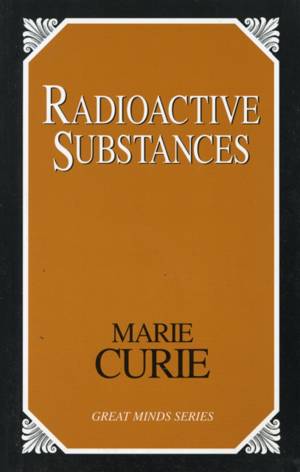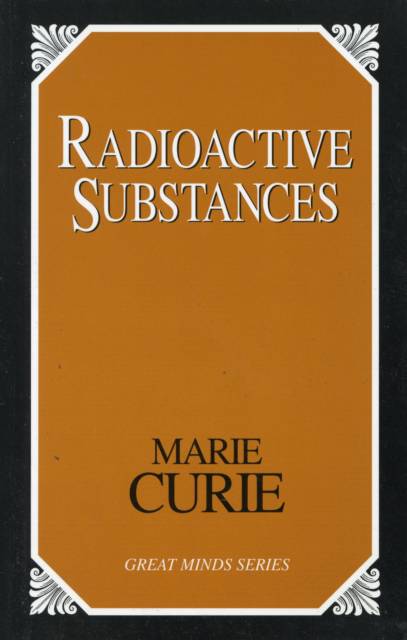
- Retrait gratuit dans votre magasin Club
- 7.000.000 titres dans notre catalogue
- Payer en toute sécurité
- Toujours un magasin près de chez vous
- Retrait gratuit dans votre magasin Club
- 7.000.0000 titres dans notre catalogue
- Payer en toute sécurité
- Toujours un magasin près de chez vous
Description
Pioneering scientist and winner of two Nobel Prizes Marie Curie describes in this interesting firsthand account the painstaking laboratory research that led to her discovery of radium and other radioactive substances. This groundbreaking work in the area of natural radioactivity, done in partnership with her husband, Pierre Curie, proved to be an important milestone in understanding the structure of matter.Born Marie Sklodowska in Warsaw, Poland, she emigrated to Paris at the age of twenty-four and enrolled in the Sorbonne after being refused admission by the University of Warsaw because she was a woman. In France she met her husband, a fellow scientist, and together they conducted the laboratory investigations on radioactive substances that would later make them famous. 1903 was a banner year for both of them. Based on her work with radium she earned a doctorate of science, and their joint research was awarded the Davy Medal from the Royal Society. Then in the same year Marie and Pierre, along with Henri Becquerel, shared the Nobel Prize for Physics for the discovery of radioactivity.When Pierre died tragically in 1906 from an automobile accident, Marie was appointed by the Sorbonne to fill his professorship, and thus she became the first female member of the faculty in the 650-year history of the university. Despite the great loss of her husband and the burden of having to raise two daughters alone, Marie carried on the work that she and Pierre had begun. In 1910, her fundamental treatise on radioactivity was published, and in 1911 she was awarded the Nobel Prize for Chemistry for the isolation of pure radium.Unfortunately, her many years of close work with radioactive substances eventually had deleterious health consequences and finally in 1934 she died of leukemia. This story of her work, told in her own words, reveals a courageous and dedicated scientist who gave everything for the advance of science.
Spécifications
Parties prenantes
- Auteur(s) :
- Editeur:
Contenu
- Nombre de pages :
- 122
- Langue:
- Anglais
- Collection :
Caractéristiques
- EAN:
- 9781573929578
- Date de parution :
- 01-02-02
- Format:
- Livre broché
- Format numérique:
- Trade paperback (VS)
- Dimensions :
- 137 mm x 213 mm
- Poids :
- 154 g

Les avis
Nous publions uniquement les avis qui respectent les conditions requises. Consultez nos conditions pour les avis.






